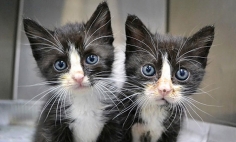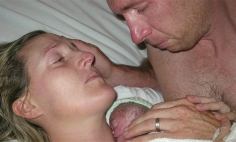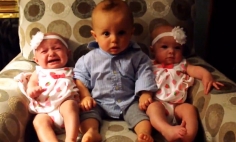Twins have always been a fascinating area of study for psychologists and biologists alike. Even in day-to-day life, twins tend to be marveled at, especially when they look the same.
Twins have given us a lot of information about nature and nurture, and what truly makes us who we are. Unfortunately, a lot of this information has been obtained as a result of unethical studies where families have been torn apart for the sake of an experiment.
One way twins have contributed to the nature vs nurture debate is through studies of twins who have been separated at birth. Twins have the same genetic makeup and are identical in almost every way possible, so if they grow up in different places away from each other, would they be different people or the same?
Of course, as many people would guess, the answer is complicated. Nature and nurture tend to go hand in hand. Yet, a lot of the results of these twin studies are actually quite astounding.

Howard Burack and Doug Rausch
One of the most famous stories of twins separated at birth, is the story of Howard Burack and his twin brother. They were separated at birth because of the Jewish Adoption Agency, which purposefully separated twins as part of a psychological experiment.
In 2000, the twins finally managed to get in contact with one another, and the reunion was understandably strange for both twins. Though they felt an instant connection, the fact that they were separated at all remained troubling.
The twisted nature of how they were separated was revealed in The Twinning Reaction, a film that detailed how agencies separate twins and triplets for experimentation.
The families of both Howard and Doug were never told that their adoptive child was a twin, and remained under the assumption that it was just the regular development of their child that was being monitored by the agency. The early childhood of both twins was not easy, with the constant psychological tests experiences of separation anxiety and high levels of stress.
Anais Bordier and Samantha Futerman
Anais and Samantha reunited with each other after growing up on different continents, not knowing about each other before in any way. They were both born in Busan but adopted by different families.
They happened to find each other on Facebook after Futerman came across a picture of someone who looked exactly like her. This led to a rekindling of a connection that neither of them had even been aware of before.
Their reunion was emotional and surreal for both of them. “It felt like she was my mirror, but one that didn’t move at the same time as me,” said Anais. After reuniting, they did a DNA test to confirm that they were in fact identical twins, and tried to search for their birth mother, which they were not able to do.
Unfortunately, they are not aware of how they were separated and why. Their incredible story was detailed in the 2015 film Twinsters.
James Springer and James Lewis
James Springer and James Lewis, or more popularly, the Jim twins, are another pair of twins who were separated at birth, only to reunite many decades later; 39 years to be exact.
When they reunited in 1979, they could not help but notice how similar their lives had been despite their time apart. The names of their wives were the same, and so were the number of marriages. They both had adopted brothers called Larry and had childhood dogs named Troy. A lot of their hobbies and interests lined up as well.
This was of course unnerving for the twins who had never known of each other, yet suddenly had found someone who was almost identical to their own selves.
There was great scientific interest in the twins and what their similarities meant for psychology and neuroscience.
Scientists had begun speculating if genetic makeup can actually be the programming of major life changes, which was part of new research at the time.
Conclusion
Stories of twins separated at birth are fascinating but troubling, as it is a story of two siblings being taken apart without them knowing.
However, with the twins that we do know today who have been through such a terrible experience, we have been able to learn a lot about nature, nurture, and what makes up who we are.
Stories like that of Lewis and Springer are not as common anymore because of better welfare laws and stricter laws when it comes to experimentation, which is of course for the better.















